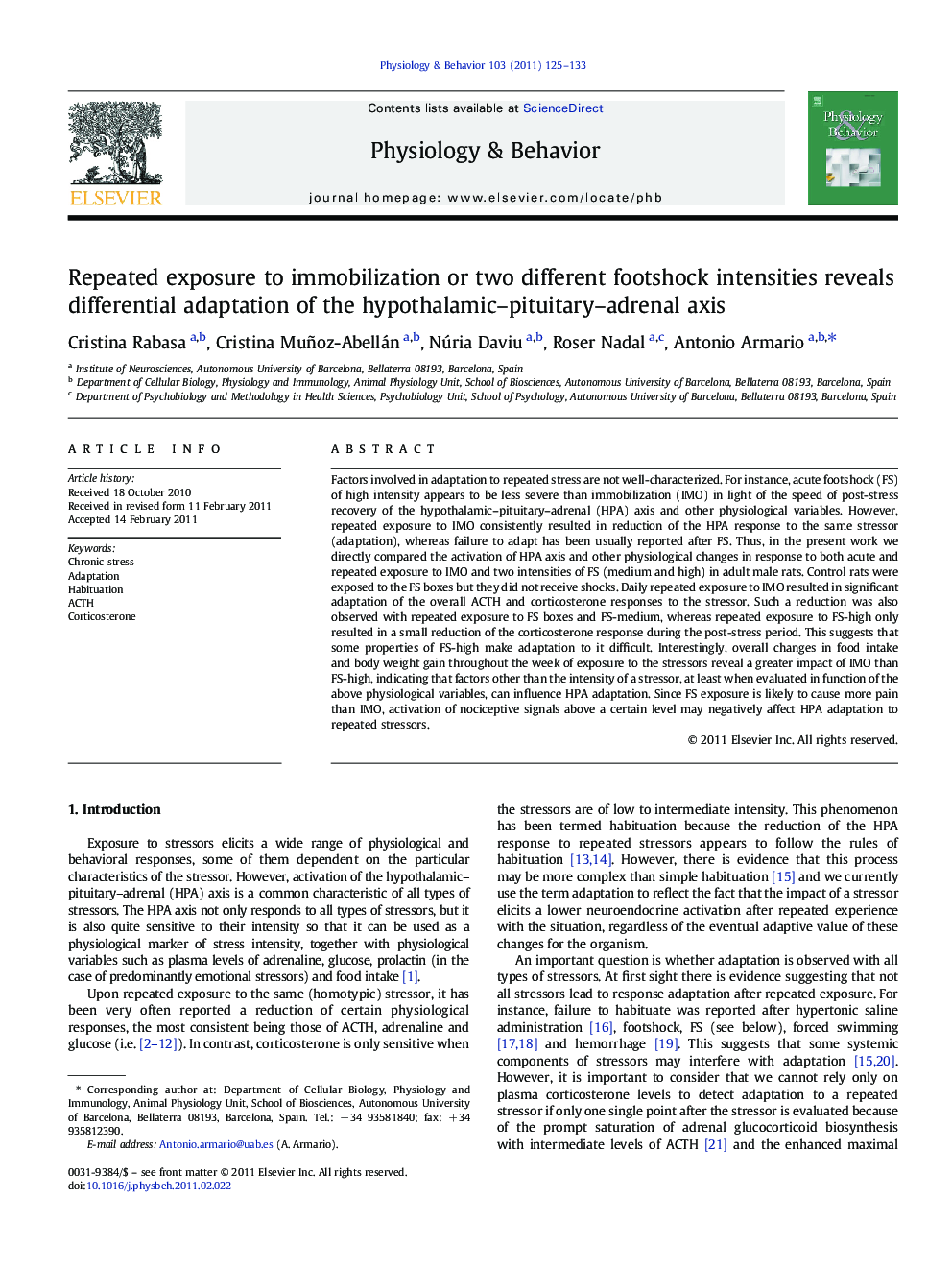| کد مقاله | کد نشریه | سال انتشار | مقاله انگلیسی | نسخه تمام متن |
|---|---|---|---|---|
| 2844642 | 1166355 | 2011 | 9 صفحه PDF | دانلود رایگان |

Factors involved in adaptation to repeated stress are not well-characterized. For instance, acute footshock (FS) of high intensity appears to be less severe than immobilization (IMO) in light of the speed of post-stress recovery of the hypothalamic–pituitary–adrenal (HPA) axis and other physiological variables. However, repeated exposure to IMO consistently resulted in reduction of the HPA response to the same stressor (adaptation), whereas failure to adapt has been usually reported after FS. Thus, in the present work we directly compared the activation of HPA axis and other physiological changes in response to both acute and repeated exposure to IMO and two intensities of FS (medium and high) in adult male rats. Control rats were exposed to the FS boxes but they did not receive shocks. Daily repeated exposure to IMO resulted in significant adaptation of the overall ACTH and corticosterone responses to the stressor. Such a reduction was also observed with repeated exposure to FS boxes and FS-medium, whereas repeated exposure to FS-high only resulted in a small reduction of the corticosterone response during the post-stress period. This suggests that some properties of FS-high make adaptation to it difficult. Interestingly, overall changes in food intake and body weight gain throughout the week of exposure to the stressors reveal a greater impact of IMO than FS-high, indicating that factors other than the intensity of a stressor, at least when evaluated in function of the above physiological variables, can influence HPA adaptation. Since FS exposure is likely to cause more pain than IMO, activation of nociceptive signals above a certain level may negatively affect HPA adaptation to repeated stressors.
Research Highlights
► Maximum HPA adaptation to a repeated stress is found with only few days of exposure.
► HPA adaptation is found with some (immobilization), but not all (footshock) stressors.
► HPA adaptation is not determined by the intensity of stressors.
► Systemic components of certain stressors could interfere with adaptation.
Journal: Physiology & Behavior - Volume 103, Issue 2, 3 May 2011, Pages 125–133